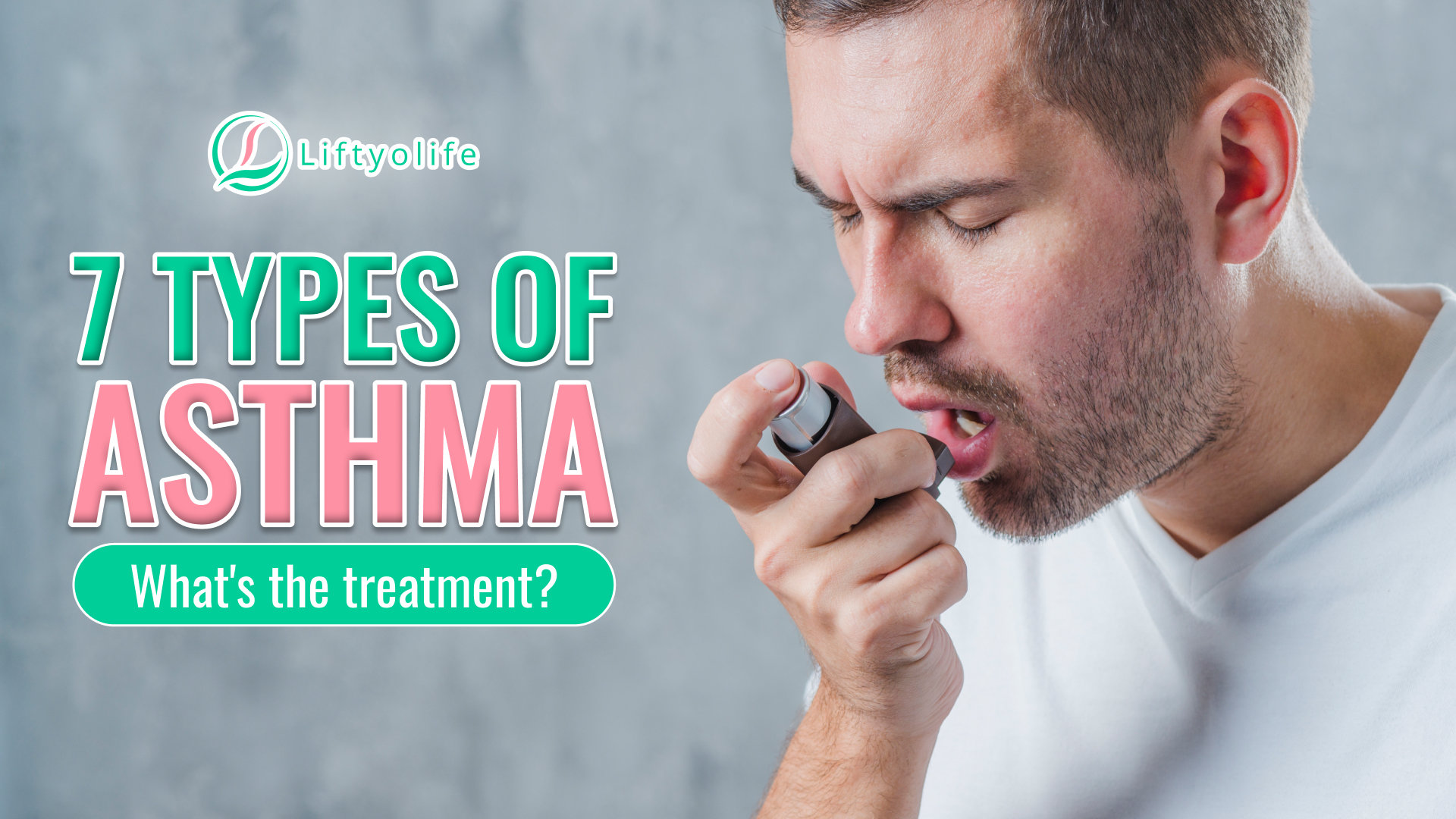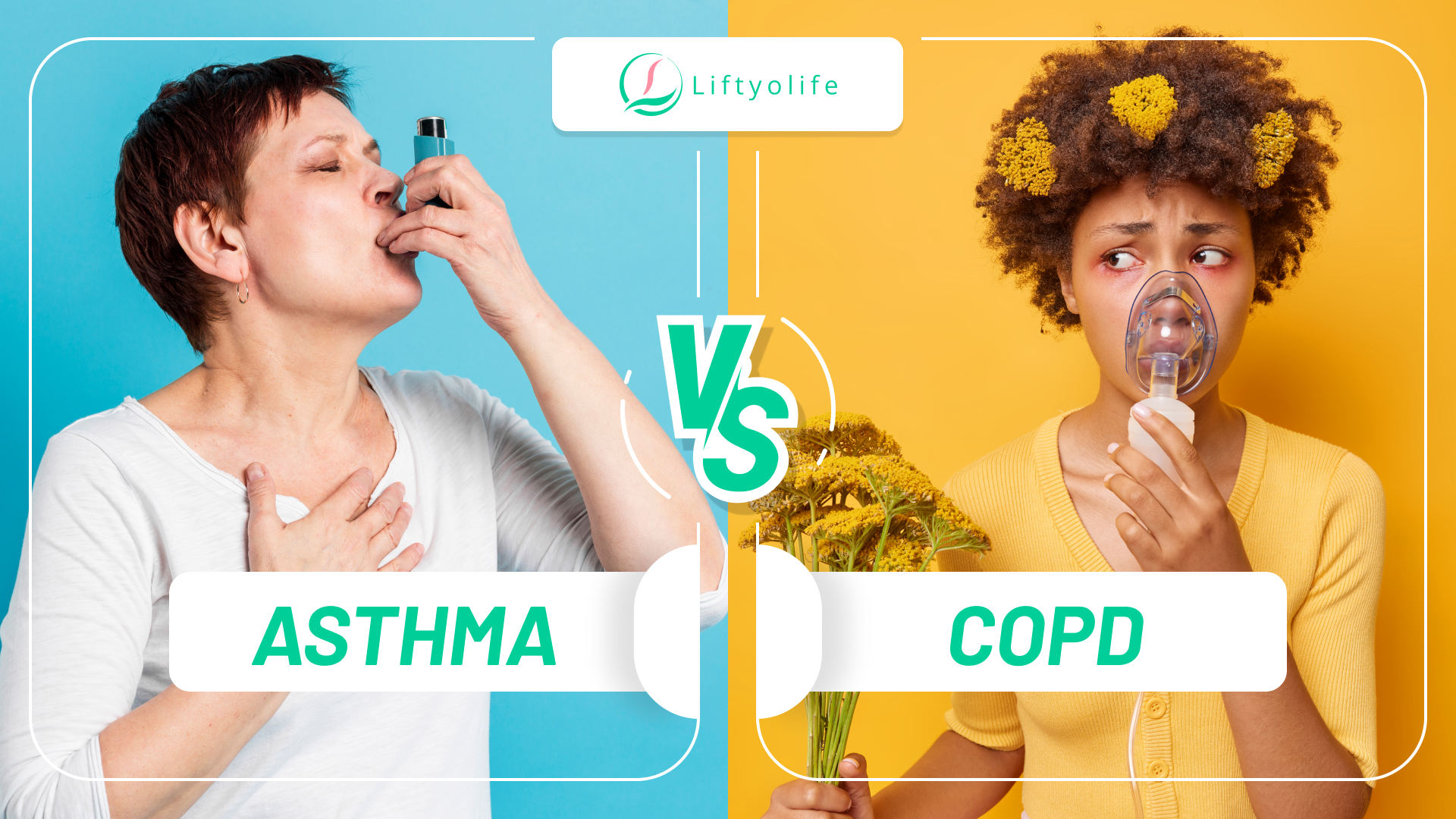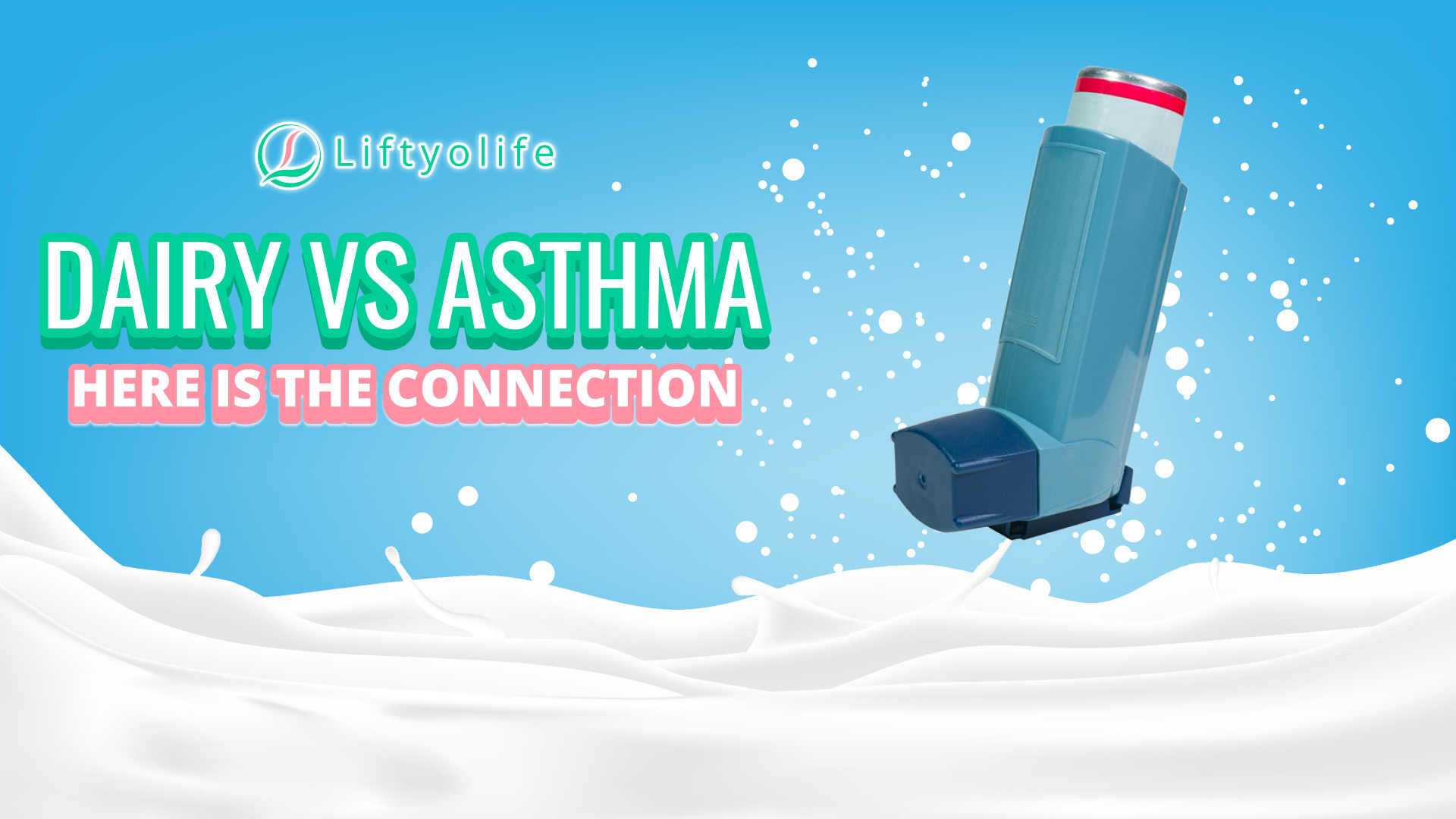Asthma vs Bronchitis: What’s The Distinction?

Many people make the mistake of confusing asthma vs bronchitis. Both of them irritate our lungs and cause the airways to become inflamed, making it difficult for us to breathe. Causes are essential in determining which illness you are suffering from. Timely treatment can save you from acute bronchitis or asthma and allow you to live an active life with them. Liftyolife (liftyolife.com) will be there for you from the start.
1. Causes of asthma vs bronchitis
Chronic bronchitis can be caused by long-term exposure to environmental irritants like tobacco smoke, dust, or chemicals. Whereas asthma is an inflammatory condition that causes muscle tightening around the airways and swelling, causing the airways to narrow.

Causes of asthma vs bronchitis
Causes of bronchitis:
Viruses that cause the common cold, for example, can also cause bronchitis.
People come into contact with viruses, which is how these germs spread. This can happen if someone else coughs nearby or comes into contact with an infected person’s hands.
If stomach acid refluxes up and into the airways of people who also have gastroesophageal reflux disease (GERD), they can develop acute bronchitis. Moreover, environmental factors, such as:
- tobacco smoke,
- air pollution,
- chemical fumes,
- dust.
In addition, if you do any of the following, you are more likely to get bronchitis:
- Smokers and those exposed to tobacco smoke have a weakened immune system, making them more susceptible to infections.
- Work in an environment that exposes you to dust and chemical fumes, such as coal mining, textiles, or farming.
- You are over 45.
Causes of asthma:
The causes of asthma are not well understood. It could be due to a combination of genes and the environment. Your ancestors’ genes may make your airways more sensitive to allergic triggers such as smoke, pollen, and pet dander.
Asthma symptoms are usually triggered by something in the environment. They include the following:
- mold,
- pollution,
- pollen,
- dust,
- cockroaches,
- pet dander,
- smoke,
- changes in the weather,
- exercise,
- chemical fumes or gasses at work,
- stress,
- colds and other infections.
There are also risk factors such as:
- Your parents suffer from asthma or allergies.
- You had respiratory infections as a child, allergies, or eczema on your skin.
- You are usually exposed to chemicals or dust at work.
- You smoke, or you might inhale secondhand smoke.
2. Symptoms of asthma vs bronchitis
Unlike a cold or pneumonia, acute bronchitis usually does not cause a runny or stuffy nose or a fever. Coughing is a common symptom of bronchitis and is a common asthma symptom as well. In fact, the first and second most common causes of cough are acute bronchitis and asthma, respectively.
Other breathing symptoms associated with asthma include wheezing, chest tightness, and shortness of breath. However, coughing may be the only symptom of asthma in some people. As a result, when determining which condition a person may have, a doctor will frequently look for other symptoms of each disorder. Asthma causes the airways to constrict and inflate, causing people to have difficulty breathing.
The most common asthma symptoms include:
- shortness of breath,
- coughing,
- wheezing.
People usually notice that their symptoms worsen at night or first thing in the morning. In addition, asthma symptoms also worsen after exposure to specific triggers, such as cigarette smoke, exercise, or pollen.
On the other hand, bronchitis symptoms are:
- general malaise,
- a chill,
- a productive cough with white, green, or yellow mucus,
- a headache,
- soreness or tightness in the chest,
- shortness of breath.
People who have symptoms such as coughing, wheezing, and shortness of breath may believe they have bronchitis when they actually have asthma.
3. How is each condition diagnosed?

How is each condition diagnosed?
Diagnose for asthma
These main tests are used to help diagnose asthma:
- FeNO test – you breathe into a machine that measures the level of nitric oxide in your breath, an indicator of pulmonary inflammation.
- Peak flow test – you blow into a handheld device that measures how quickly you can exhale, and this may be repeated several times over a few weeks to see if it changes over time.
- Spirometry entails blowing into a machine that measures how quickly you expel air and how much air you keep in your lungs.
- After being diagnosed with asthma, you may be given a chest X-ray or an allergy test to see whether an allergy is causing your symptoms or not.
Diagnose bronchitis
During the first days of illness, it can be difficult to tell the difference between bronchitis and the common cold. Your doctor uses a stethoscope to listen closely to your lungs as you breathe during the physical exam.
In some cases, you have to undergo the following tests:
- X-ray of the chest. A chest X-ray can help determine whether you have pneumonia or another condition that could be causing your cough.
- Pulmonary function testing. During this test, you blow into a spirometer, measuring how much air your lungs keep and how quickly you expel it. This examination looks for signs of asthma or emphysema.
- Sputum examinations. Sputum is the mucus that comes up from your lungs when you cough. It can be tested to see if you have any illnesses that might benefit from antibiotics. Sputum can also be tested for allergy symptoms.
4. Treatment
4.1. Chronic bronchitis
Medication and lifestyle changes can help to alleviate your chronic bronchitis symptoms and slow or stop the disease’s progression. Many people live with mild symptoms for a long time and can breathe independently without the use of supplemental oxygen.
- If you smoke, the first step is to stop. Your lungs will not fully recover, but they will decline at a much slower rate.
- Oxygen therapy: This is reserved for severe cases where your lungs have been so damaged that your blood oxygen levels are dangerously low. As needed, you can inhale oxygen from a portable machine at home.
- If you are frequently out of breath, a specialized rehab program can teach you how to manage your disease. For example, you might discover a better way to breathe while exercising.
- Bronchodilators (airway openers): These medications relax your airways, making it easier to breathe and relieving your bronchitis symptoms.
- Anti-inflammatory drugs: Steroids reduce the swelling that constricts your airways.
- Lung reduction surgery is performed to remove damaged areas of the lung.
- Pulmonary rehabilitation can assist you in learning how to live with your breathing issues while remaining active.
4.2. Acute bronchitis
A virus causes the majority of acute bronchitis cases. This means that antibiotics will be ineffective. This infection almost always dissipates on its own. Home treatment focuses on symptom relief:
- Get a lot of rest.
- Drink many fluids while avoiding caffeine and alcohol.
- Take over-the-counter pain relievers to reduce inflammation, relieve pain, and lower your fever. A child should never be given aspirin. It’s been linked to Reye syndrome, which affects the liver and the brain.
- Some over-the-counter cough medications can help break up or loosen mucus. Look for the word “guaifenesin” on the label, or consult your pharmacist for a recommendation.
- Use a humidifier or increase the humidity in your home.
- Some people with acute bronchitis require inhaled medication. If you are wheezing, you may need this.
- Coughing that produces mucus should not be suppressed. This type of cough aids in the removal of mucus from the bronchial tubes. It will hasten the healing of your bronchial tubes.
- If you smoke, you should give it up.
4.3. Treating asthma vs bronchitis
Asthma’s mainstay treatment is inhaled corticosteroids and beta-agonists. Alternatives or add-on medications, such as omalizumab, leukotriene modifiers, oral corticosteroids, and theophylline, are also used at this time. Anticholinergic medicines for the treatment of asthma have not been approved by the US Food and Drug Administration. In any case, they are sometimes used to treat asthma.
5. Prevention
Prevention of chronic bronchitis
- People can avoid getting bronchitis by avoiding the ways viruses spread. Hand-washing is the most effective method for accomplishing this.
- To prevent the expansion of germs, you should wash your hands before and after eating and frequently throughout the day.
- Keep all of your vaccines up to date. Vaccines against the flu and pneumonia are essential for protecting your lungs.
- If you smoke, consult your doctor about methods such as nicotine replacement therapy and medication to help you quit. Giving up smoking is the most effective way to avoid the lung damage that leads to bronchitis.
- Make sure you have regular checkups to ensure you stay as healthy as possible.
Prevention of asthma
- Unfortunately, people cannot prevent asthma. They can, however, avoid asthma triggers known to aggravate their condition.
- Avoid pollen, dust, pollution, and chemicals that irritate your lungs. Wear a mask or ventilator if you must be around these substances.
- Strictly track inline the treatment regimen prescribed by your healthcare provider or doctor.
Have you understood the distinction between asthma vs. bronchitis yet? Some treatments can help reduce the symptoms of both conditions when possible, but neither one has a cure. If you get a cough and it lasts more than a few weeks, you should see your doctor to rule out asthma as the cause. Liftyolife (liftyolife.com) can help you at the very first step.







